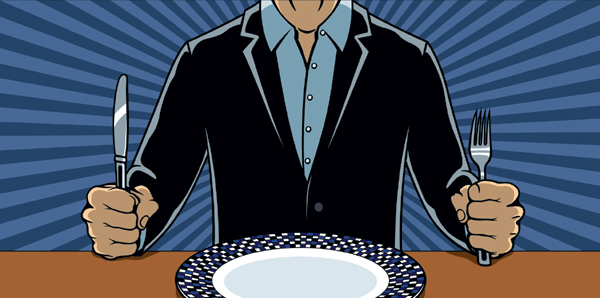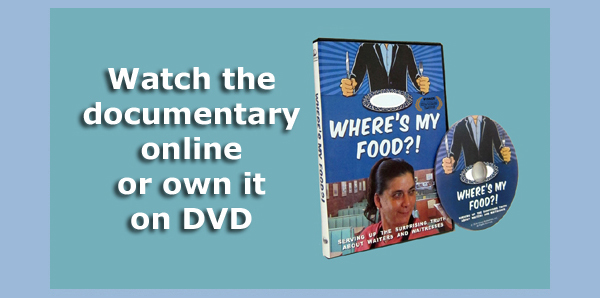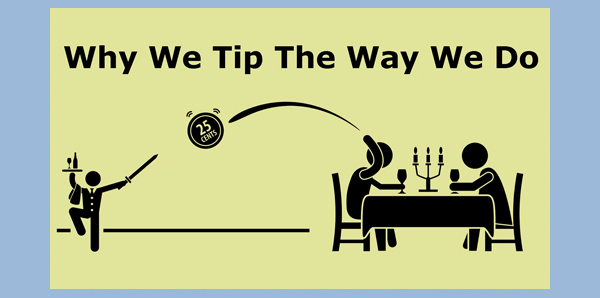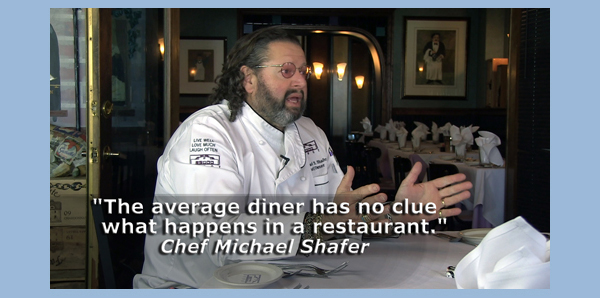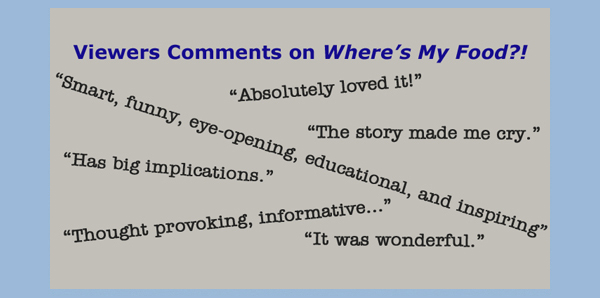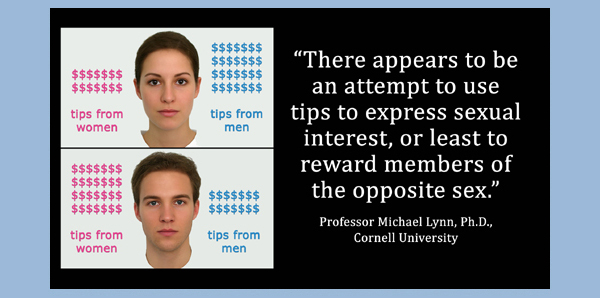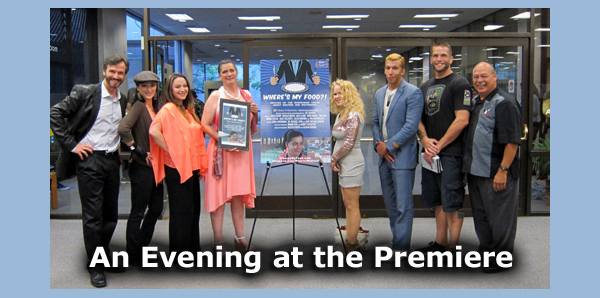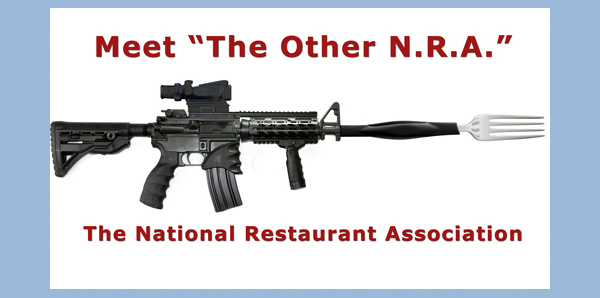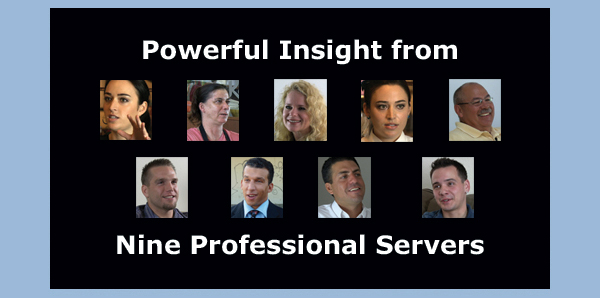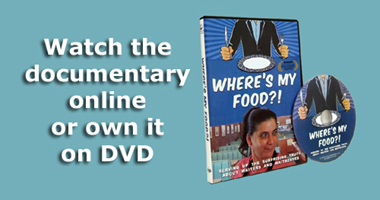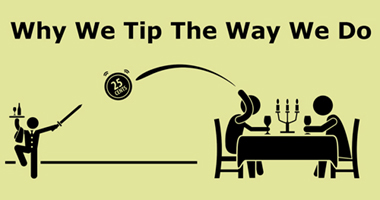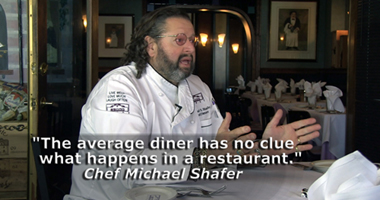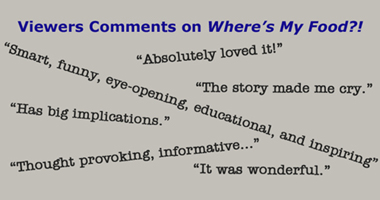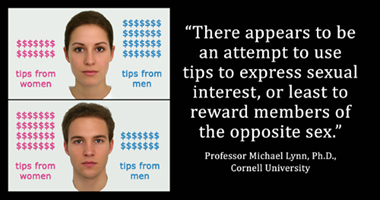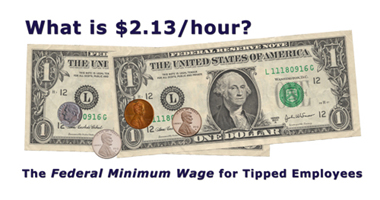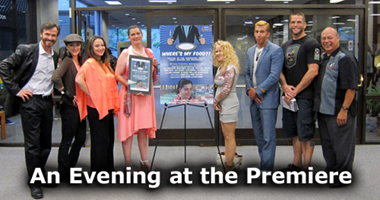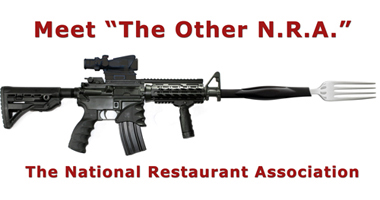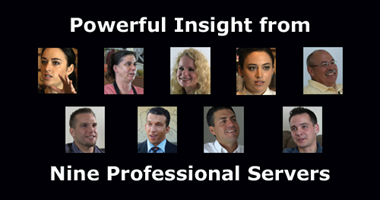Latest News
Announcing Amazon Prime Video Release
![]() This
week "Where's My Food?!" became available on Amazon Prime Video.
This
week "Where's My Food?!" became available on Amazon Prime Video.
PREVIOUS UPDATE:
Announcing Google Play Release
![]() This
week "Where's My Food?!" became available on Google
Play. Not just for Android lovers, Google Play is growing in
popularity with Apple iOS users, because their movie library
can can accessed on all their devices...including their
at-home television.
This
week "Where's My Food?!" became available on Google
Play. Not just for Android lovers, Google Play is growing in
popularity with Apple iOS users, because their movie library
can can accessed on all their devices...including their
at-home television.
PREVIOUS UPDATE:
Announcing Online and DVD Release
![]() This week "Where's My Food?!" became available for rent or purchase on Apple iTunes.
This week "Where's My Food?!" became available for rent or purchase on Apple iTunes.
PREVIOUS UPDATE:
A Wonderful Evening at the Film's Big Screen Premiere
 This
week we enjoyed premiering "Where's My Food?!" on the big
screen for an appreciative audience. The full cast and crew
also attended.
This
week we enjoyed premiering "Where's My Food?!" on the big
screen for an appreciative audience. The full cast and crew
also attended.
PREVIOUS UPDATE:
Launching the New Trailer
 After
a few weeks of intense editing, we just released the new movie trailer for Where’s
My Food?! You can view it
here.
After
a few weeks of intense editing, we just released the new movie trailer for Where’s
My Food?! You can view it
here.
The new trailer is only 107 seconds long, but it captures the impact and passion of the full documentary in a rapid-fire, high-energy style. With a pulsing musical beat that sounds eerily like a Nirvana tune, the trailer moves fast! If you take your eyes off the screen for a second you will miss something. Let us know what you think.
PREVIOUS UPDATE:
Closed Captioning
 This
week we completed the labor-intensive task of Closed
Captioning of the documentary. This step is required by
federal law to help people with hearing impairments enjoy
films and television. Closed Captions are quite different
from subtitles, which are intended for viewers who hear
normally, but who simply don't understand the language
spoken in the film. Closed Captions must convey all relevant
meaning, including non-verbal sounds, collectively
known as "atmospherics."
This
week we completed the labor-intensive task of Closed
Captioning of the documentary. This step is required by
federal law to help people with hearing impairments enjoy
films and television. Closed Captions are quite different
from subtitles, which are intended for viewers who hear
normally, but who simply don't understand the language
spoken in the film. Closed Captions must convey all relevant
meaning, including non-verbal sounds, collectively
known as "atmospherics."
 One
tricky element of Closed Captioning was repositioning 5% of
the 3000 or so total captions -- which are normally at the
bottom of the screen -- above "lower thirds," which are
speaker-identifying information inside a colorful frame, as
shown in the video captures above.
One
tricky element of Closed Captioning was repositioning 5% of
the 3000 or so total captions -- which are normally at the
bottom of the screen -- above "lower thirds," which are
speaker-identifying information inside a colorful frame, as
shown in the video captures above.
PREVIOUS UPDATE:
Reading a Review
 This
week we were happy to read some inspiring words about
"Where's My Food?!" written by author and
bartender-to-the-stars Kyle Branche:
This
week we were happy to read some inspiring words about
"Where's My Food?!" written by author and
bartender-to-the-stars Kyle Branche:
“Where’s My Food?!” is the MUST SEE documentary of the year. Something is cooking in the food and beverage industry, but from within the ranks. Workers are rising up and speaking their minds about the difficult issues they face in an industry that doesn’t take care of its own.
With excellent editing pace, director Lee Godden’s 75-minute film takes the viewer into the dark side of the profession, showing the lives of several food service workers.
In Europe, this is a true and honest profession and
career. But in America, it’s not allowed to be, due to a
severely reduced minimum wage, usurped through Congress.
Caught in the middle between establishment owners and NRA
(Restaurant, not Rifle) lobbying dollars, servers come home
with a zero paycheck. It’s about time someone brought these
dirty little secrets to the nation’s attention.
Kyle Branche, author of “Life
Behind Bars” and 30-year veteran bartender
PREVIOUS UPDATE:
Enhancing the Story with Music
 What’s
a movie without good music? We layered in a total of 34
songs to the 75-minute fine cut version of Where’s My
Food?! We took our time selecting only the scenes and
sections that called for musical enhancement. Instead of
utilizing the entirety of each piece, we edited them down to
somewhere between 20 to 60 seconds each. Some fade out, yet
some have the song’s original beginning and ending intact,
with the middle surgically excised.
What’s
a movie without good music? We layered in a total of 34
songs to the 75-minute fine cut version of Where’s My
Food?! We took our time selecting only the scenes and
sections that called for musical enhancement. Instead of
utilizing the entirety of each piece, we edited them down to
somewhere between 20 to 60 seconds each. Some fade out, yet
some have the song’s original beginning and ending intact,
with the middle surgically excised.
The pieces we selected vary wildly in style and feel, and were applied based on the emotion of the scene they support. For example, upbeat: ukulele. Oppressive: cello. Nostalgic: country guitar. Sad: ethereal (Werner Herzog-style) guitar. For the “History of Waiters and Waitresses” section we used a timeline of 17th century harpsichord minstrel, 19th century French accordion, 1920s ragtime and 1950s big band swing. Most frequently we went with piano to express everything from sadness to hopefulness.
The advice we received from our music consultant Charles Wiley was invaluable.
PREVIOUS UPDATE:
Polishing the First Rough Cut into a Fine Cut
 After
seventeen months of work we viewed the film's first rough cut from start to
finish. (Yes, we've seen and tweaked every second of video
and audio hundreds of times, but never the full 75 minutes
as a whole.) The rough cut has no titles, no credits and no
musical score, but nevertheless we allowed ourselves a brief
celebratory smile at this
milestone.
After
seventeen months of work we viewed the film's first rough cut from start to
finish. (Yes, we've seen and tweaked every second of video
and audio hundreds of times, but never the full 75 minutes
as a whole.) The rough cut has no titles, no credits and no
musical score, but nevertheless we allowed ourselves a brief
celebratory smile at this
milestone.
Now the really detailed work begins. In addition to title, credits and emotion-supporting music, subsequent rough cut versions will have better color, sound and graphics. When all that looks good we'll have a fine cut, from which we'll create the documentary's updated trailer. Following that [cue fanfare]: final cut.
PREVIOUS UPDATE:
The Rough Edit
 Sixteen
months into this project we've completed the assembly edit
(see below) and have begun working on the rough edit.
Coinciding with this progress we are rolling out our new
logo, a vector graphic showing an impatient restaurant
customer clenching a knife and fork in his fists, hovering
over an empty plate, with the unspoken thought bubble of
Where's My Food?! (You can click on this thumbnail to see
a bigger version.)
Sixteen
months into this project we've completed the assembly edit
(see below) and have begun working on the rough edit.
Coinciding with this progress we are rolling out our new
logo, a vector graphic showing an impatient restaurant
customer clenching a knife and fork in his fists, hovering
over an empty plate, with the unspoken thought bubble of
Where's My Food?! (You can click on this thumbnail to see
a bigger version.)
The 3-part (set-up/conflict/resolution) story structure is in place and first phase of fine-tuning is underway. What were placeholders for narration are now being filled with actual narration. What were markers to add specific graphics are now being filled with those graphics.
The first rough cut is only a couple of weeks away. Producers and other stakeholders will view it and submit their comments, then editing will continue. Every week more visually-exciting and story-enhancing components and graphics are being added.
Rounding out the rough edit process will be color correction and sound normalization. Placeholder music and sound effects will also be kept until most of the rough editing is complete.
The film’s goal remains clear: to accurately portray the profession and professionals of food service in a manner that’s timeless, relevant and appealing to a wide audience. Onward!
PREVIOUS UPDATE:
The Assembly Edit
 After
14 months of shooting we’ve finally made it to the “assembly
edit” phase of the documentary filmmaking process. From the
dozens of food servers and experts we’ve spoken with and interviewed,
we’ve narrowed the list down to 12 individuals (not
counting our person-on-the-street interviews) whose
on-camera stories and expertise will likely be included in
the final cut of Where’s My Food?!
After
14 months of shooting we’ve finally made it to the “assembly
edit” phase of the documentary filmmaking process. From the
dozens of food servers and experts we’ve spoken with and interviewed,
we’ve narrowed the list down to 12 individuals (not
counting our person-on-the-street interviews) whose
on-camera stories and expertise will likely be included in
the final cut of Where’s My Food?!
Countless hours of raw footage were reviewed, then distilled down to an "unassembled" 180-minute collection of short clips (ranging from 3 to 30 seconds), each of which was identified by data location, topic and segment, and all of which tell part of the story.
The target TRT (total running time) goal of the finished documentary is 75 minutes. During this assembly edit phase we're focused on preserving only those clips that help move it briskly through a classic 3-part story arc involving set-up, conflict and resolution.
During the set-up we introduce viewers to the industry, to the job, to the psychology and affects of tipping, and to the servers and their personal stories and goals. During the "second act" (or conflict phase) we detail the servers' struggles with the physical demands of the job, with customers, with the BOH (back of house), with "the other NRA," with poverty, discrimination, addictions and with healthcare issues. During the fast-moving, high-emotion resolution, viewers learn if the servers achieved their goals. (Some do, some don't.) Viewers can then draw their own conclusions about the story's meaning.
After the assembly edit is complete we'll move on to editing the rough cut, which involves story flow, graphics, color correction, sound correction, music, titles and helpful B-roll.
